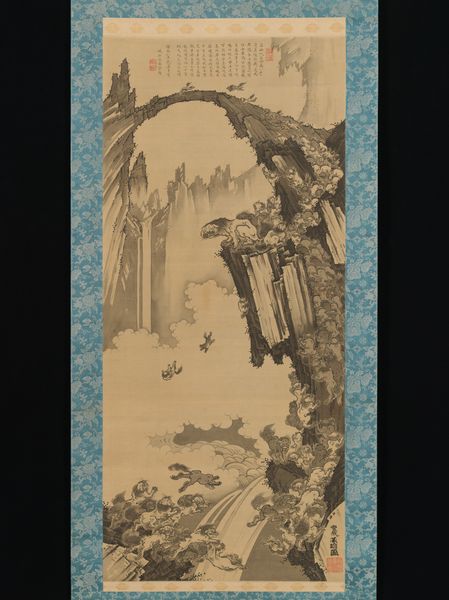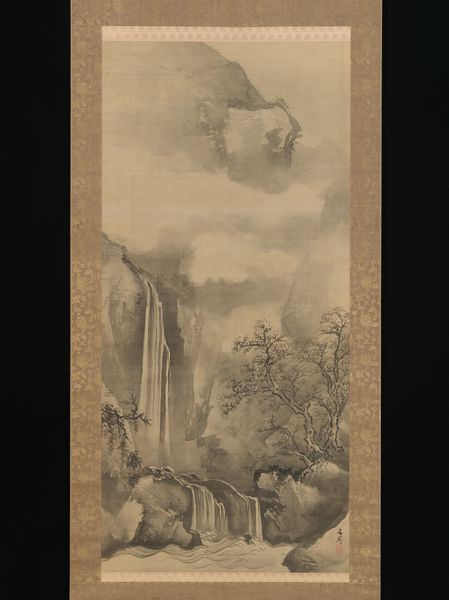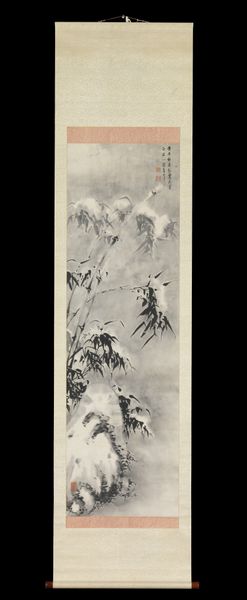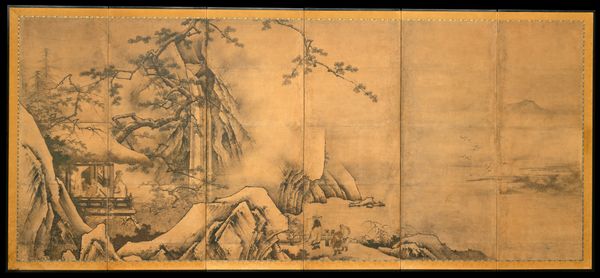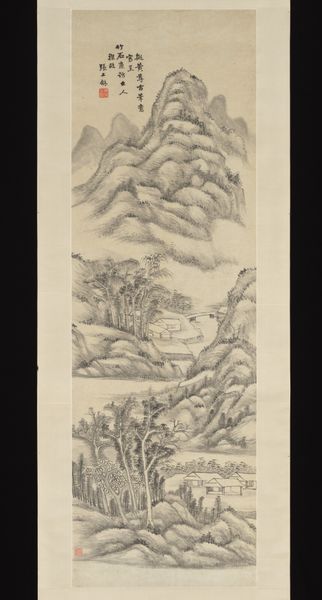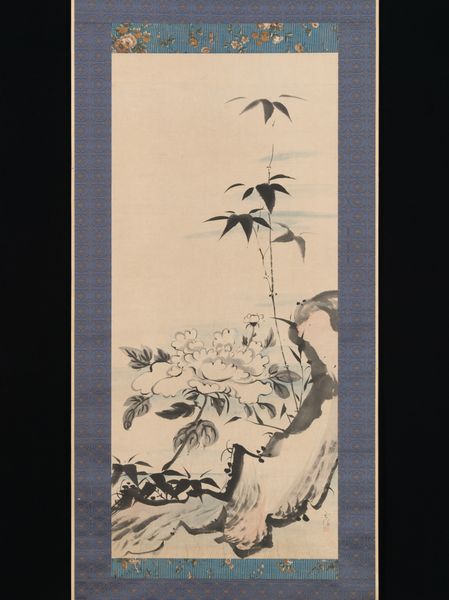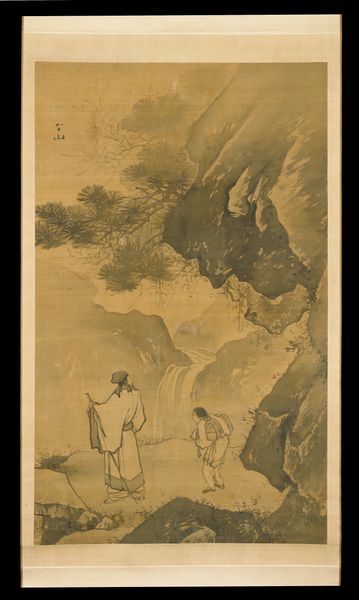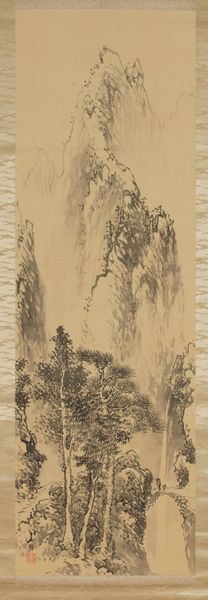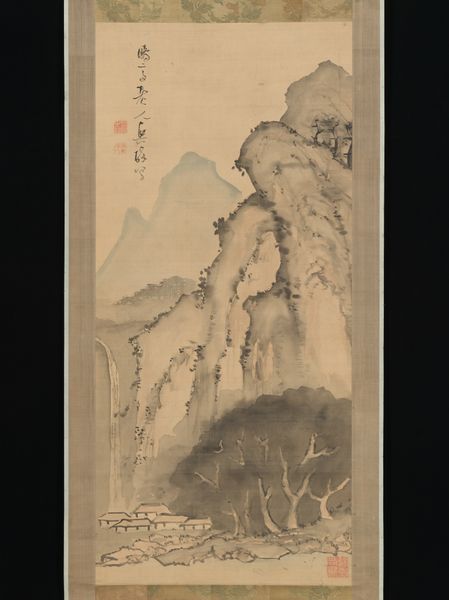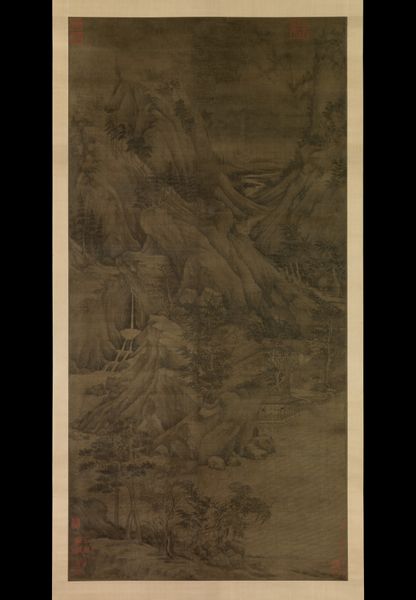
tempera, ink, woodblock-print
#
snow
#
tempera
#
asian-art
#
landscape
#
ink
#
woodblock-print
#
geometric
Dimensions: Image: 47 1/8 × 19 3/4 in. (119.7 × 50.2 cm) Overall with mounting: 77 in. × 25 1/8 in. (195.6 × 63.8 cm) Overall with knobs: 77 in. × 27 3/8 in. (195.6 × 69.5 cm)
Copyright: Public Domain
Curator: Standing before us is a hanging scroll entitled "Snowy Landscape," a woodblock print brought to life with ink and tempera, crafted sometime between 1620 and 1880. Editor: Immediately, I am struck by how serene it is. The stark contrast between the dark ink and the white of the snow creates a visually calming effect. It is as if winter's silence has been captured on silk. Curator: Indeed. Snow landscapes in East Asian art carry a rich symbolic weight. Snow often signifies purity, resilience in adversity, and the cyclical nature of time itself, marking an ending and a beginning. These elements all resonate deeply in traditional symbolism. Editor: That connection to resilience is particularly potent considering that landscapes from this period were so intertwined with ideas of social and political upheaval. Were artists maybe using natural scenes as metaphors to navigate sensitive topics under repressive regimes? Curator: That's an astute reading. Landscapes in that time provided artists an indirect means to convey emotions or socio-political commentary safely. These mountainous scenes might be interpreted as a place of retreat. Even the very geometric forms add to the psychological dimension, possibly signifying control. Editor: It's fascinating how seemingly simple compositions become vessels for such multifaceted ideas. And in that geometric sense, the buildings contrast in my eyes: do those buildings suggest a desire for community against a background of isolation? Curator: They do offer a sense of place. While this image reflects many universal truths, its visual language firmly roots itself within Asian artistic traditions and thought. Hyakusen, despite borrowing some features from Western painting techniques, never fully diverged from traditional aesthetics. The landscape, in that sense, becomes a vessel containing multiple layers of cultural and political meaning. Editor: This makes me think how essential context becomes when we engage with art from different cultures and periods. To really understand this work, you must unpack history and philosophical dimensions as part of one conversation. What do you make of that approach? Curator: I fully agree. Symbols like the snow serve as an essential gateway into this art, enabling an exchange of meanings through time and place. To analyze this image in these terms helps maintain a continuity of the collective memory that such artwork can evoke. Editor: I found my vision shifted today seeing both universal, but more culturally constructed meanings layered in nature. Curator: I completely agree. These observations enriched my comprehension of symbols within this art form.
Comments
No comments
Be the first to comment and join the conversation on the ultimate creative platform.
